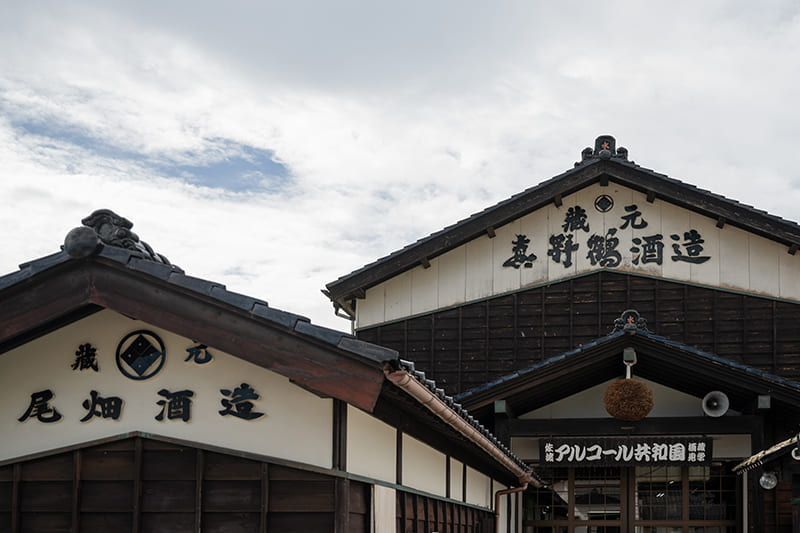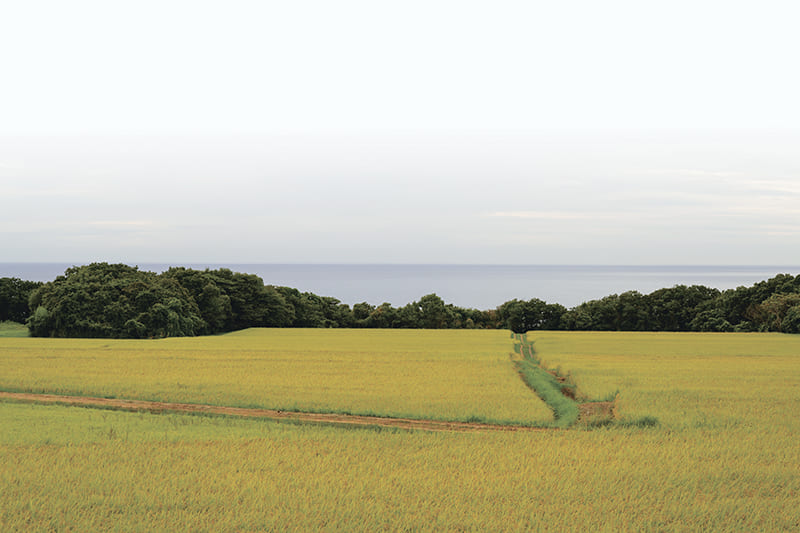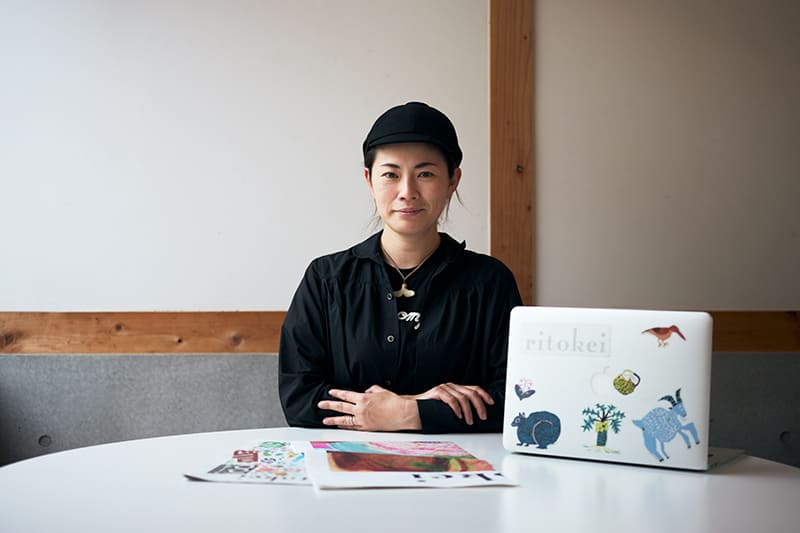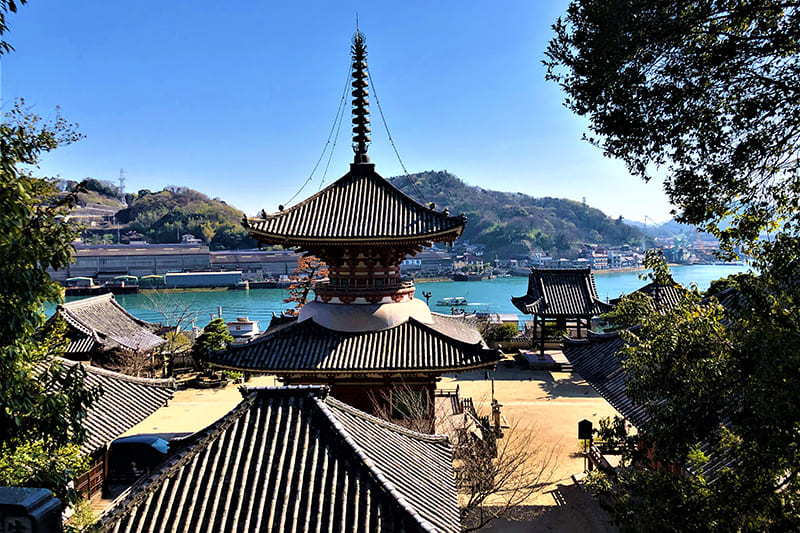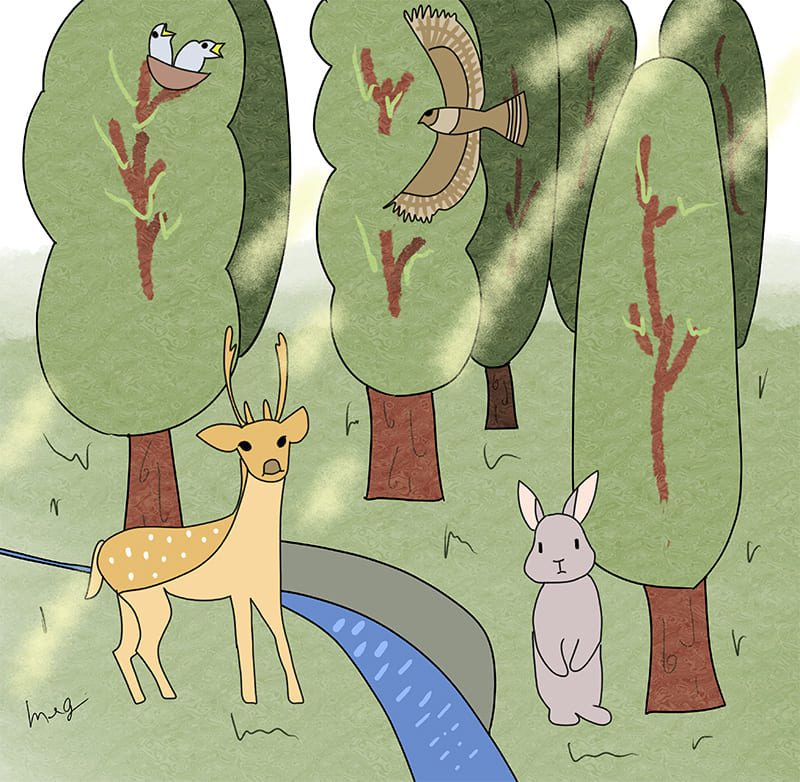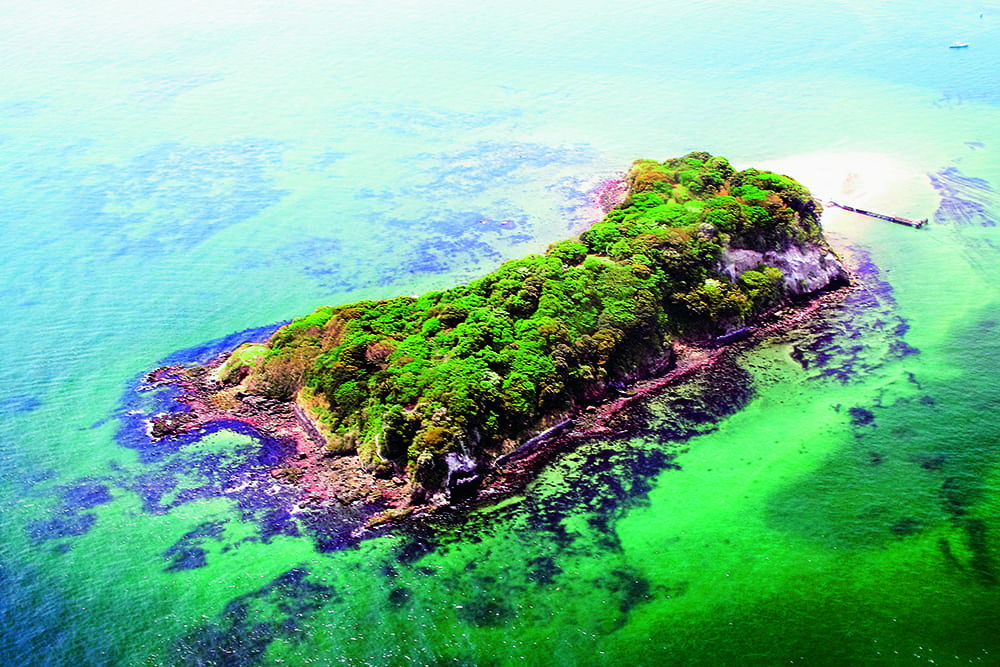April 21, 2023
Old townscape and ‘Rabbit Island’ one of Japan’s three great sake areas
TAKEHARA/SAIJO
Visiting the old townscape and “Rabbit Island”
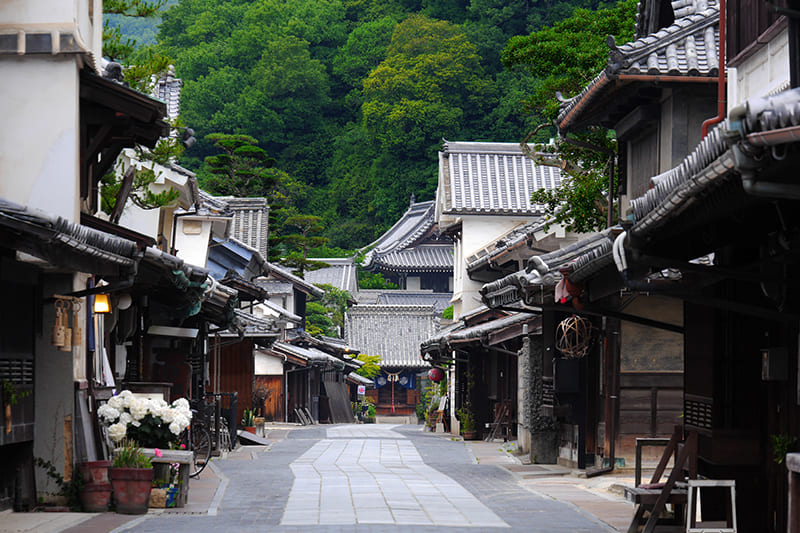
©VMG HOTELS & UNIQUE VENUES
Known as “the little Kyoto of Aki” (the old name for part of present-day Hiroshima Prefecture), Takehara is a tranquil town retaining a historic streetscape designated an Important Preservation District in Japan for Groups of Traditional Buildings. In the Heian Period (794 to the beginning of the 12th century), Takehara flourished as a domain of Kyoto’s Shimogamo Shrine. In the Muromachi Period (1336-1573), the town’s port became widely known as an important transportation hub in the Seto Inland Sea.
In the course of its long history, the town reached the peak of its prosperity with the salt fields established there in 1650. The salt was transported from Takehara’s port throughout Japan, and the ships returned loaded with rice and other commodities. The distribution of rice led to the start of sake production in Takehara, and the town’s maritime transportation industry expanded while the port prospered as an outbound hub for shipping salt and rice.
The old streetscape that remains today is a vestige of Takehara’s age of prosperity. The majority of its machiya (traditional wooden houses) were built between the mid-Edo Period (18th century) and the Meiji Era (19th to early 20th centuries). The oldest is the Yoshii Residence, built in 1691. (The house’s interior is not open to the public.) The special characteristic of Takehara’s townscape is that each block is made up entirely of traditional buildings, as in the past. Looking north and south on the main street (Honmachi-dori), with its rows of traditional merchant house structures, gives one the illusion of having time-traveled to one of the traditional merchant towns that used to exist throughout Japan.
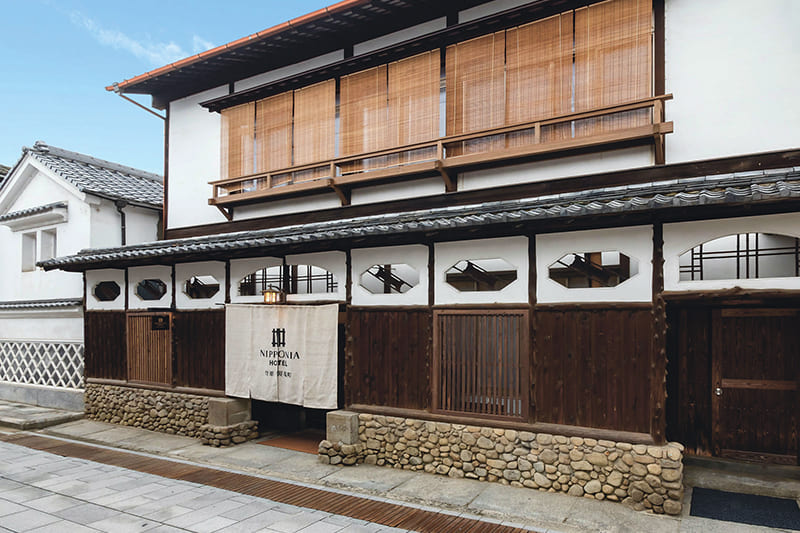
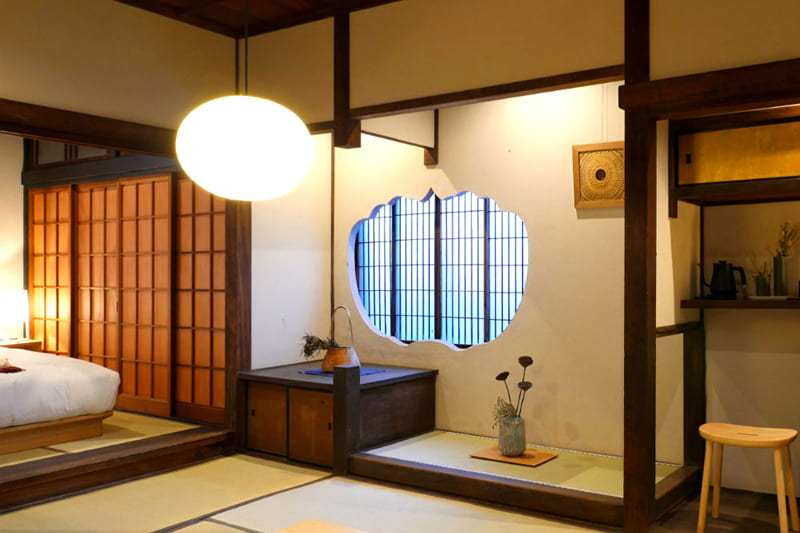
If you are staying in Takehara, the Nipponia Hotel Takehara is recommended. This decentralized hotel is comprised of three buildings dispersed around the town. One building houses the front desk and dining facilities, while the others contain guest accommodations. All 10 guest rooms are housed in old residences and warehouses, renovated in a contemporary style and situated in Takehara’s preservation district. Staying here is an ideal way to make the most of your visit to Takehara.
Address: 1-4-16 HonMachi, Takehara-shi, Hiroshima prefecture https://www.nipponia-takehara.com/
©VMG HOTELS & UNIQUE VENUES
No trip to Takehara is complete without a visit to Okunoshima, popularly known as “Rabbit Island.” Taking the ferry from the little port near Takehara, you no sooner disembark on the island than scores of cute rabbits appear before your eyes. (There are about 1,000 rabbits on the island in all.)
But there is a dark side to Okunoshima’s history. Between 1929 and 1945, the Imperial Japanese Army secretly developed and produced poison gas on the island. At the time, rabbits were kept for the purpose of animal testing of poison gas. None of the rabbits on the island today are descended from those rabbits, all of which were euthanized when the poison gas-related facilities were dismantled after the war. It is said that the current rabbit population is descended from rabbits that were released and returned to the wild in the 1970s. Nonetheless, the island’s cute rabbits do recall the poison gas experimentation of the past and underline a dark side of history. A museum about the development of poison gas, and the remnants of military facilities, remain on the island today. A visit is an opportunity to learn more about Japan’s history.
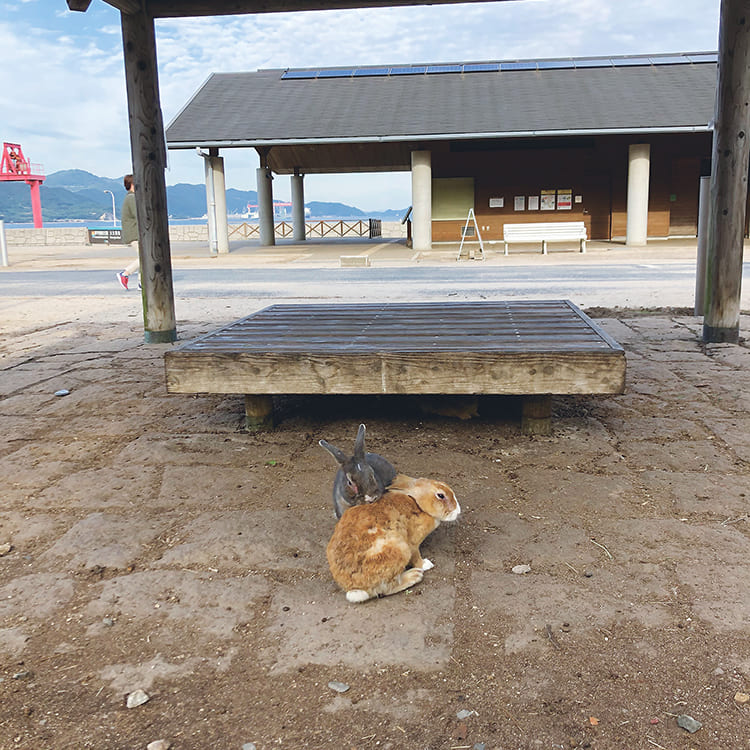
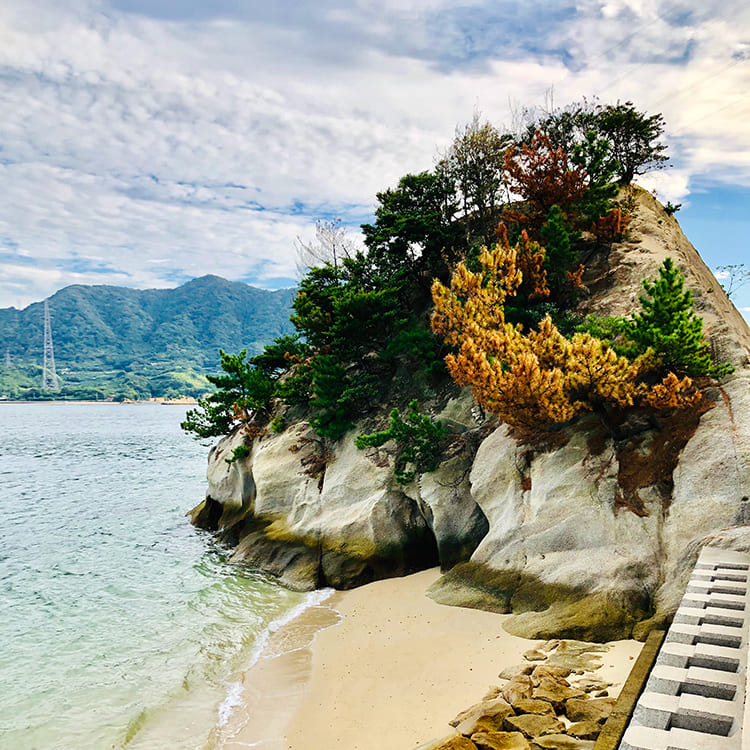
The ferry to Okunoshima departs from Tadanoumi Port, taking about 15 minutes to reach the island 3 kilometers offshore. Tadanoumi Station is about a 20-minute train ride from Takehara Station.
PHOTOS: RIO SHIRAI
竹原:古い町並みと“ウサギの島”を巡る。
竹原は、“安芸の小京都”と呼ばれ、国の重要伝統的建造物群保存地区にも選定されている古い町並みが残る。この街が最も発展を遂げたのは1650年に開発された塩田がきっかけだった。現存する町並みはこの頃の名残である。特長は一つの街区がそのまま伝統的な建築で構成されている点で、本通りと呼ばれるメインストリートに立って南北を見てみると、昔ながらの商家の建物が並び、かつて日本各地にあった伝統的な商家町にタイムスリップしてしまったかのような錯覚を覚える。
竹原には、“ウサギの島”として知られる大久野島もある。島にはかわいいウサギが1000羽近くいるが、この島は歴史の闇も抱えている。旧・日本軍により1929年から終戦まで、秘密裏に毒ガスを開発・製造していた島だったのだ。島には毒ガス開発に関する資料館や軍施設の遺構も残る。
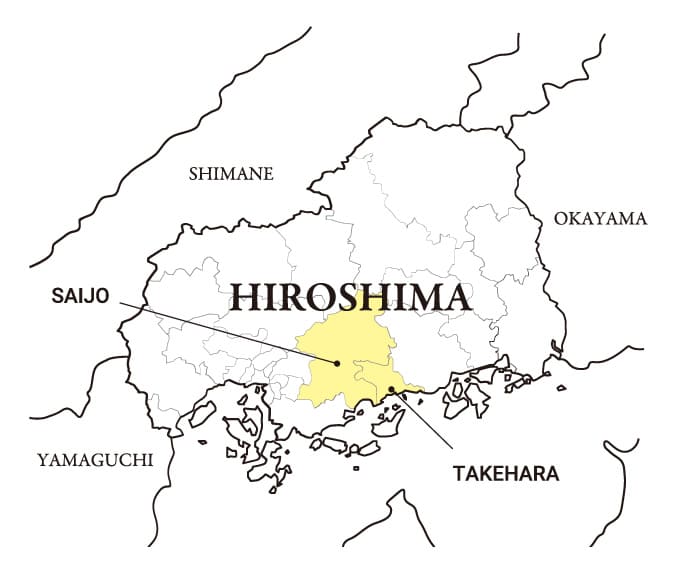
One of Japan’s three great sake production areas
The town of Saijo is regarded as one of Japan’s three great sake production areas, along with Nada in Hyogo Prefecture and Fushimi in Kyoto Prefecture. Just steps from Saijo Station is the 800-meter-long Sakagura-dori (Sake Brewery Street). To this day there are seven breweries producing sake in the vicinity of the station. When the San-yo Line was opened in 1894, the station was built near where the Hakubotan, Kirei and Kamotsuru breweries already stood. Why are so many breweries concentrated in such a small area? When they were established, this was the only district blessed with water ideal for sake brewing. A brewery district tour offering chances to view the sake-making process and purchase various types of sake will delight anyone who loves sake.
Saijo is about 40 minutes from Hiroshima Station on the San-yo Line. With Hiroshima University’s relocation to the area in the 1970s, Saijo was developed as an academic center and commuter town, and underwent remarkable growth. It was in the late Edo Period in the 19th century that Saijo became widely known for sake production. The area is a basin surrounded by mountains, and the soft water brought in from these mountains is indispensable in producing Saijo’s delicious sake.
In the early days of sake production, however, the softness of the local water was a problem. From the late Edo Period to the early Meiji Era, the town’s sake production was modeled on brewing methods used in Nada, Hyogo Prefecture. At the time, even the yeast was sent in from Nada; but with the use of soft water instead of Nada’s mineral-rich hard water, fermentation was slow and all of the sake turned out cloying and sweet. What is more, preservation methods were ineffective and the sake spoiled quickly. In sake making, minerals like calcium and magnesium become nutrients for yeast, activating fermentation. Since soft water has few of the nutrients required by yeast, sake production with soft water is characterized by slow and gentle fermentation. Through trial and error, a brewing method for making delicious sake with soft water was established around the middle of the Meiji Era. Thus, a mellow, well-rounded “feminine” sake, as opposed to Nada’s “masculine” (dry, sharp-tasting) sake, was born in Saijo.
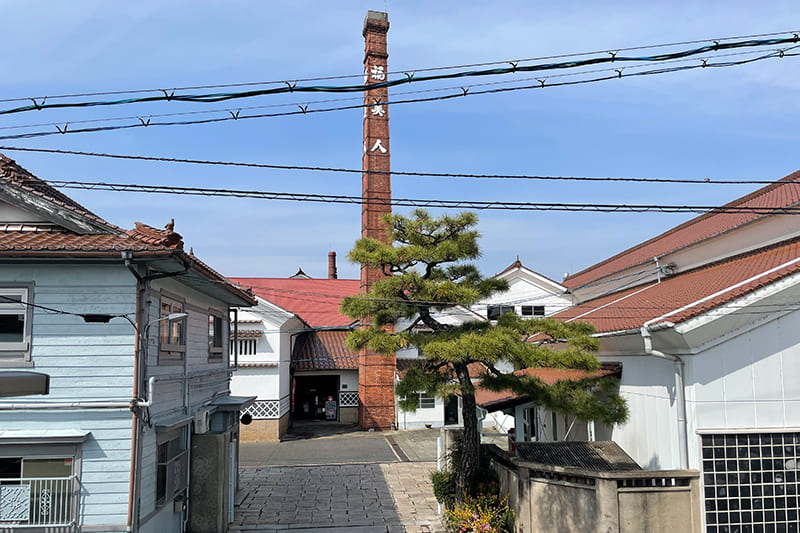
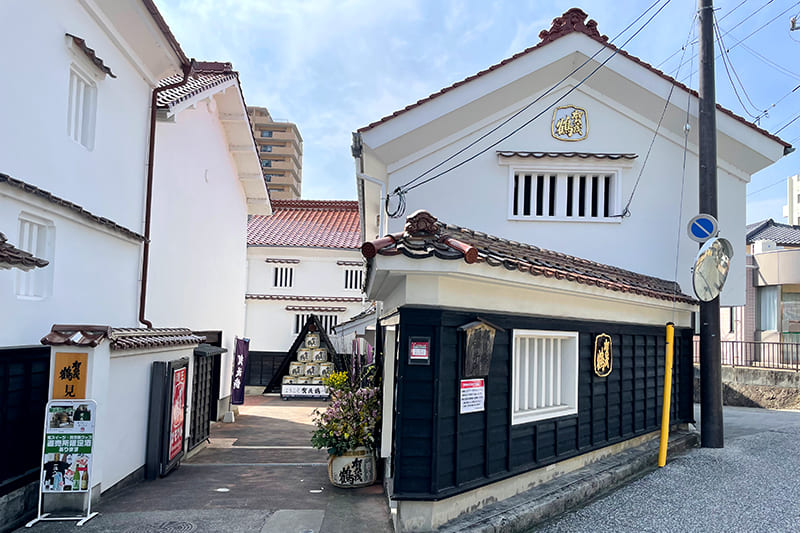
Views of Saijo. Around 200,000 sake aficionados flock to the Saijo Sake Festival, held every October, to taste renowned Saijo sake. This is when the town is at its liveliest, with sake flowing from the daylight hours on.
PHOTOS: RIO SHIRAI
西条:日本酒の三大生産地。
西条は、灘(兵庫県)、伏見(京都府)と並び、日本酒の三大産地と呼ばれる街だ。JR西条駅のそばには「西条酒蔵通り」と呼ばれる約800mほどの通りがあり、現在も7社の蔵元が日本酒の醸造を行っている。駅の周りに酒蔵があるのは元々酒蔵があるところに、鉄道の開通に合わせ駅をつくったからだ。この狭い範囲に酒蔵が密集したのは、創業当時酒造りに適した水が出たのがこの地域だけだったからである。周囲の山からもたらされる軟水は西条の美味しい酒づくりには欠かせないものになっている。
しかし当初は軟水という水質が問題だった。ミネラルが豊富な灘の硬水と違い思うように発酵が進まず、甘すぎる酒しかできず、保存も効かなかった。試行錯誤の結果、明治中頃に醸造方法が確立、西条では「灘の男酒」(キレ味のある辛口)に対し、まろやかな甘口の酒「女酒」が生み出されている。
Return to Sustainable Japan Magazine Vol. 23 article list page

